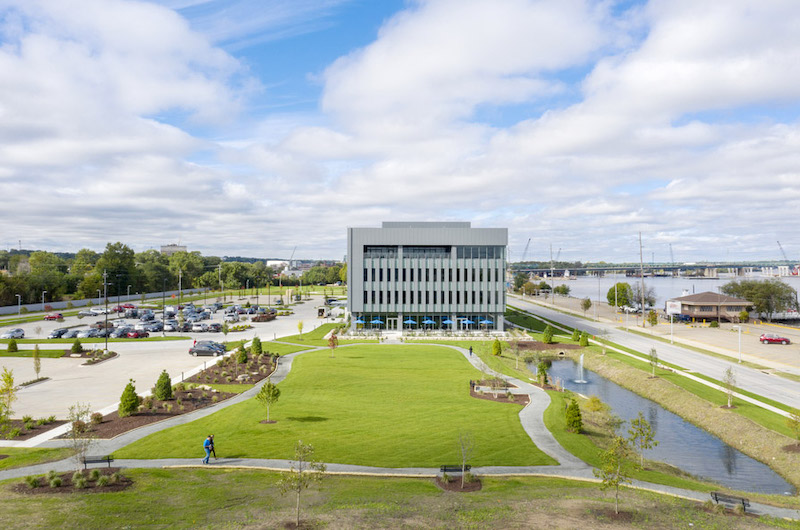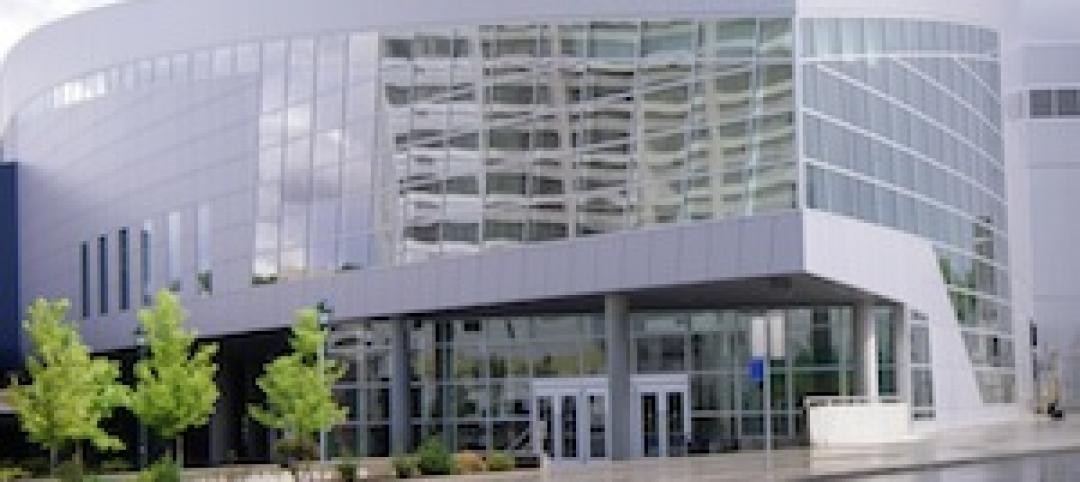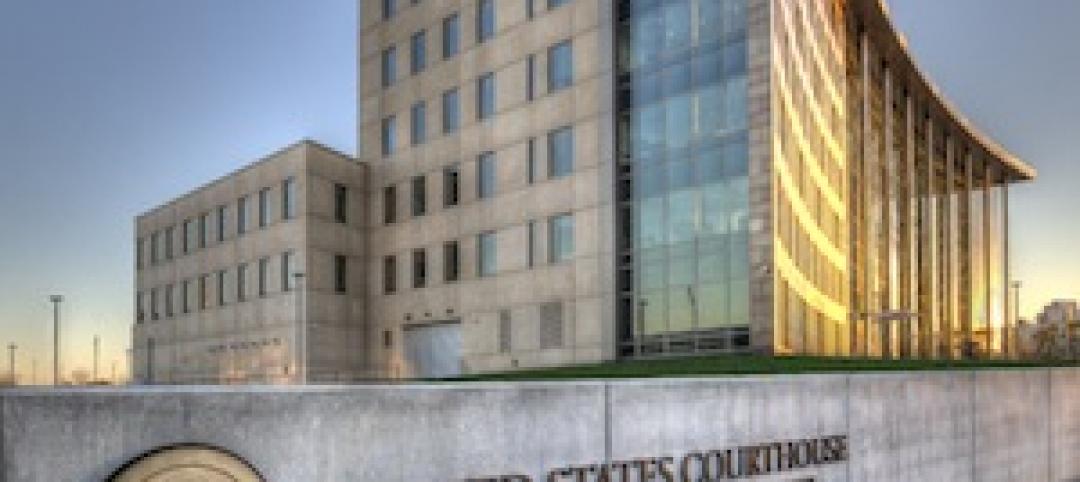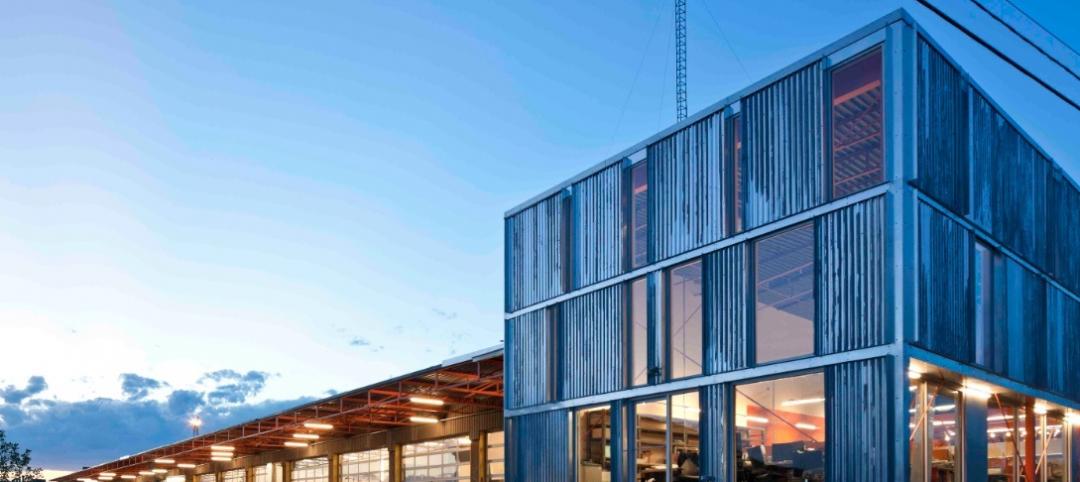You’ve made the jump. You took the risk and have officially set out alone, swimming against the current in an overwhelming sea of large corporations. Your ideas get legs, even take flight, and your workload begins to demand an ever-growing crop of new talent. You beef up your compensation offerings and benefits packages. You move into a new space and add a slew of amenities to attract the best and brightest in the industry. What could possibly go wrong?
For companies experiencing rapid growth, work-life balance can be a challenge to maintain, yet it remains a vital aspect of a healthy work environment.
There is an opportunity to create social opportunities within the workplace, while offering simple gestures that allow employees to more efficiently accomplish day-to-day life, customized to each individual.
Our workplace team at LEO A DALY aims to shape physical environments to allow these features to thrive. However, at the end of the day, many amenities are truly operational in nature and rely heavily on an owner’s long-term commitment.
As you set out on your quest to provide every available amenity to your employees, it can be overwhelming. We recommend prioritizing your desired amenities and considering the following principles to help employees maintain a healthy balance.
Redefine the traditional view of work-life balance
We spend a lot of time in our jobs. The 40-hour work week no longer exists. In fact, in today’s workplace, there is no longer such a thing as “after work.” Employees’ lives can exist largely within the office, or they can work remotely from home with little-to-no direct interaction with their co-workers.
Definitions of work-life balance are numerous and vary widely. This balance has been traditionally perceived as having equal time committed to work, family, hobbies, outside social events, etc. – doing whatever it takes to accomplish all things for all people. However, this balance is truly individualized. It is driven by each person and will vary over time, sometimes every day. The right balance for one employee will seem absurd to someone else. The right balance today may be different tomorrow.
Most importantly, striking that perfect balance has undeniable health benefits. Overly stressed employees can become susceptible to workplace burnout, increasing the potential for disengagement, errors, accidents, sick leave and eventually high turnover rates. To combat stress, service-based amenities can help employees reduce demands on their time. Social amenities can brighten their days, providing interaction and engagement. When employees feel balanced (by their own definition), they will be happy, healthy, productive and a shining example to recruit new top talent.
Understand the difference between service-based and social amenities
Service-based amenities make life a little easier. They are conveniences that would otherwise take time away from our day. They allow life to happen outside the workplace.
- During site selection, plan for access to public transportation.
- Coordinate internal ridesharing programs.
- Offer powerful Wi-Fi for untethered collaborative working.
- Strategically arrange healthy food selections for breakfast, lunch and dinner.
- Provide reusable flatware, plates and water bottles with filling stations throughout.
- Provide a staff concierge service for mail service and package delivery/reception, dry cleaning, last-minute grocery needs, airport travel.
- Staff a full-time handyman to complete odds and ends at employees’ homes, reducing the stress of at-home coordination.
- Set aside space for dedicated lactation rooms for new mothers and quiet rooms for private matters, no questions asked.
- Investigate childcare options: internal daycares, subsidizing nearby daycare centers.
- Provide temporary pop-up specialties: barber, hair stylist, clinic/health assessment services.
Social amenities are engaging, bringing people together to create a vibrant work culture. They activate interaction between employees, and potentially invite the community to join the experience. Employees engaged in their community only strengthen your culture. They create life inside the workplace.
- Activate common break areas with nearby circulation and seating variety.
- Provide coffee and other beverage options in common spaces to start the morning.
- Boost Wi-Fi capacity, and allow connectivity to personal devices.
- Create large multi-purpose spaces and encourage use by community groups.
- Integrate spaces for activity: gym equipment, group fitness, multi-purpose space, outdoor walking trails.
- Offer access to an on-site staff trainer and instructed classes.
- Provide locker rooms with showers and changing facilities.
- Create recreation spaces with video games, simulators, pool tables, foosball, etc.
- Incorporate a theater room.
- Provide access to snacks and beverages, alcoholic and otherwise.
- Partner with local retailers for ground-level access to coffee shops, boutiques, eateries, etc.
Designing for balance
You know your people, and you are the subject matter expert as we begin our work. LEO A DALY’s workplace team has the privilege to listen and learn about a new process with each new client. Direct collaboration with you leads to design for the right variety of service-based and social amenities, customized to your specific workplace culture. We craft experiences and curated views of workplace features. We create spaces that are flexible to adapt to new trends.
As you grow, be smart and prioritize the conveniences you offer, find the right mix of service and social perks to fit your culture and encourage employees to break the mold as they find their perfectly customized work-life balance. Healthy employees make for healthy companies.
Related Stories
| Aug 30, 2013
State Government Report [2013 Giants 300 Report]
Stantec, Jacobs, PCL Construction among nation's top state government design and construction firms, according to BD+C's 2013 Giants 300 Report.
| Aug 28, 2013
Federal Government Report [2013 Giants 300 Report]
Building Design+Construction's rankings of the nation's largest federal government design and construction firms, as reported in the 2013 Giants 300 Report.
| Aug 26, 2013
What you missed last week: Architecture billings up again; record year for hotel renovations; nation's most expensive real estate markets
BD+C's roundup of the top construction market news for the week of August 18 includes the latest architecture billings index from AIA and a BOMA study on the nation's most and least expensive commercial real estate markets.
| Aug 23, 2013
5 most (and least) expensive commercial real estate markets
With an average cost per square foot of $16.11, Stamford, Conn., is the most costly U.S. market for commercial real estate, according to a new study by the Building Owners and Managers Association International. New York and San Francisco are also among the nation's priciest markets.
| Aug 22, 2013
Energy-efficient glazing technology [AIA Course]
This course discuses the latest technological advances in glazing, which make possible ever more efficient enclosures with ever greater glazed area.
| Aug 22, 2013
6 visionary strategies for local government projects
Civic projects in Boston, Las Vegas, Austin, and suburban Atlanta show that a ‘big vision’ can also be a spur to neighborhood revitalization. Here are six visionary strategies for local government projects.
| Aug 22, 2013
Warehouse remake: Conversion project turns derelict freight terminal into modern office space [slideshow]
The goal of the Freight development is to attract businesses to an abandoned industrial zone north of downtown Denver.
| Aug 20, 2013
Code amendment in Dallas would limit building exterior reflectivity
The Dallas City Council is expected to vote soon on a proposed code amendment that would limit a building’s exterior reflectivity of “visible light” to 15%.
| Aug 16, 2013
Today's workplace design: Is there room for the introvert?
Increasingly, roaming social networks are praised and hierarchical organizations disparaged, as workplaces mimic the freewheeling vibe of the Internet. Research by Susan Cain indicates that the "openness" pendulum may have swung too far.
| Aug 14, 2013
Green Building Report [2013 Giants 300 Report]
Building Design+Construction's rankings of the nation's largest green design and construction firms.















